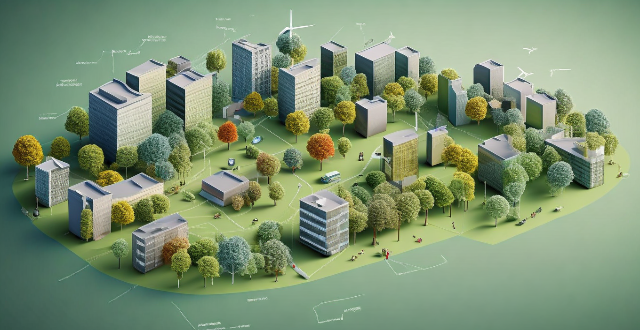Climate services are vital for urban planning as they provide data on climate change impacts, aiding planners in making informed adaptation and mitigation decisions. Key steps include assessing climate risks like temperature changes and extreme weather events, enhancing resilience through strategies such as green infrastructure and energy efficiency, and integrating climate services into long-term planning processes. Collaboration, data collection, public education, and monitoring are crucial for effective implementation and refining of approaches over time.

Integrating Climate Services into Urban Planning
Climate services play a crucial role in urban planning by providing information about the potential impacts of climate change on cities. This information can help urban planners make informed decisions about how to adapt to these changes and mitigate their effects. In this response, I will discuss several ways that climate services can be integrated into urban planning.
1. Assessing Climate Risks
The first step in integrating climate services into urban planning is to assess the climate risks facing a city. This involves analyzing historical climate data and projecting future climate scenarios based on various greenhouse gas emission pathways. The following are some key factors to consider:
- Temperature Changes: Projected increases in temperature can lead to heatwaves, which can have negative impacts on public health and energy demand for cooling.
- Precipitation Patterns: Changes in precipitation patterns can affect water resources, flooding risks, and stormwater management systems.
- Sea Level Rise: Rising sea levels can increase the risk of coastal flooding and erosion, particularly for low-lying areas or islands.
- Extreme Weather Events: More frequent and severe extreme weather events, such as hurricanes, tornadoes, and wildfires, can cause significant damage to infrastructure and property.
2. Enhancing Resilience
Once climate risks have been assessed, urban planners can use climate services to enhance the resilience of cities. This involves designing infrastructure and buildings that can withstand extreme weather events and adapting to changing climate conditions. Some strategies include:
- Green Infrastructure: Incorporating green spaces, such as parks and trees, can help reduce heat island effects and improve air quality.
- Stormwater Management: Implementing sustainable stormwater management practices, such as rain gardens and permeable pavement, can help manage excess rainfall and reduce flooding risks.
- Building Codes: Updating building codes to ensure structures are designed to handle extreme weather events, such as high winds or heavy snow loads, can protect lives and property.
- Energy Efficiency: Promoting energy-efficient buildings and transportation options can reduce greenhouse gas emissions and mitigate the effects of climate change.
3. Integrating Climate Services into Long-term Planning
To effectively integrate climate services into urban planning, it is essential to incorporate them into long-term planning processes. This involves considering climate risks when developing master plans, comprehensive plans, and other strategic documents that guide future development. Some key steps include:
- Collaboration: Engaging with stakeholders from various sectors, such as government agencies, businesses, and community organizations, can ensure that climate risks are considered across all aspects of urban planning.
- Data Collection: Gathering relevant climate data and conducting regular assessments of climate risks can inform decision-making processes and identify areas where adaptation measures may be needed.
- Public Education: Raising awareness among the public about climate risks and how they can be addressed through urban planning can foster greater support for adaptation measures.
- Monitoring and Evaluation: Continuously monitoring progress towards climate adaptation goals and evaluating the effectiveness of implemented strategies can help refine approaches over time.
In conclusion, integrating climate services into urban planning is crucial for ensuring that cities are resilient in the face of climate change. By assessing climate risks, enhancing resilience through various strategies, and incorporating climate services into long-term planning processes, urban planners can create more sustainable and livable cities for current and future generations.